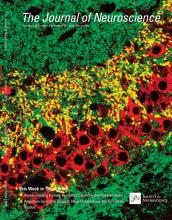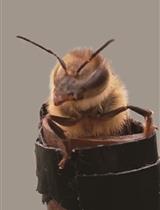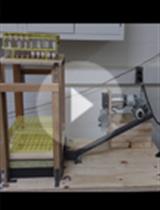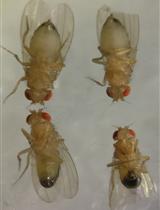- EN - English
- CN - 中文
Flight and Climbing Assay for Assessing Motor Functions in Drosophila
评估果蝇运动功能的飞行和攀爬分析
发布: 2018年03月05日第8卷第5期 DOI: 10.21769/BioProtoc.2742 浏览次数: 12584
评审: Serge BirmanAnonymous reviewer(s)
Abstract
Motor control requires the central nervous system to integrate different sensory inputs and convey this information to the relevant central pattern generator for execution of motor function through motor neurons and muscles. Proper motor control is essential for any mobile organism to survive and interact with the external environment. For flying insects, motor control is required for flying, walking, feeding and mating apart from other more advanced behaviours such as grooming and aggression. Any perturbation to the sensory input or malfunctioning of neural connections to the motor output can result in motor defects. Here, we describe simple protocols for assessing flight and climbing ability of fruit flies, which can be used as two general tests to assess their motor function.
Keywords: Tethers (系绳)Background
Coordinated motor functions are important for every mobile organism for survival as the major needs of finding food, shelter, mates and escaping from predators involve motor activity. Here we describe protocols to assess the flight and climbing ability of both individual and groups of Drosophila melanogaster. Both these protocols have been used extensively in earlier studies (Agrawal and Hasan, 2015; Pathak et al., 2015; Richhariya et al., 2017).
Part I: Flight protocol
Materials and Reagents
- Plastic tray of approximately 22 x 18 x 5 cm
- Petri dish of ~9 cm diameter (Fisher Scientific, catalog number: 12033333; Manufacturer: Pyrex, catalog number: 1480/08D ) with its outer side covered with Whatman filter paper (GE Healthcare, catalog number: 1001-918 ) (Figure 1A)
- Tethers made of stainless steel rod (diameter 0.2 cm) attached to stainless steel wire (diameter 0.01 cm) (Figure1B)
- Polystyrene foam of approximately 10 x 6 x 5 cm
- One glass slide (Thermo Fisher Scientific, Thermo ScientificTM, catalog number: 3011-002 )
- Round synthetic hair brush, size 4 (Camlin, series 66, size 4)
- Fly strains to be tested of either sex, aged 3-4 days
- Ice
- Transparent nail polish
Equipment
- Wide field microscope (Olympus, model: SZX9 )
- Timer/stop watch (Fisher Scientific, catalog number: S02272 )
- Empty glass vials for cold anaesthesia
- Behaviour room with controlled temperature (~25 °C) and humidity (~60%)
- JVC colour video camera–ModelTK-C1481BEG (JVCKENWOOD, model: TK-C1481BEG )
Software
- Origin 8.0 software (MicroCal, Origin Lab, Northampton, MA, USA)
- Streampix digital video recording software
Procedure
文章信息
版权信息
© 2018 The Authors; exclusive licensee Bio-protocol LLC.
如何引用
Readers should cite both the Bio-protocol article and the original research article where this protocol was used:
- Manjila, S. B. and Hasan, G. (2018). Flight and Climbing Assay for Assessing Motor Functions in Drosophila. Bio-protocol 8(5): e2742. DOI: 10.21769/BioProtoc.2742.
- Pathak, T., Agrawal, T., Richhariya, S., Sadaf, S. and Hasan, G. (2015). Store-operated Calcium entry through orai is required for transcriptional maturation of the flight circuit in Drosophila. J Neurosci 35(40): 13784-13799.
分类
神经科学 > 行为神经科学 > 实验动物模型 > 其它
您对这篇实验方法有问题吗?
在此处发布您的问题,我们将邀请本文作者来回答。同时,我们会将您的问题发布到Bio-protocol Exchange,以便寻求社区成员的帮助。
Share
Bluesky
X
Copy link












